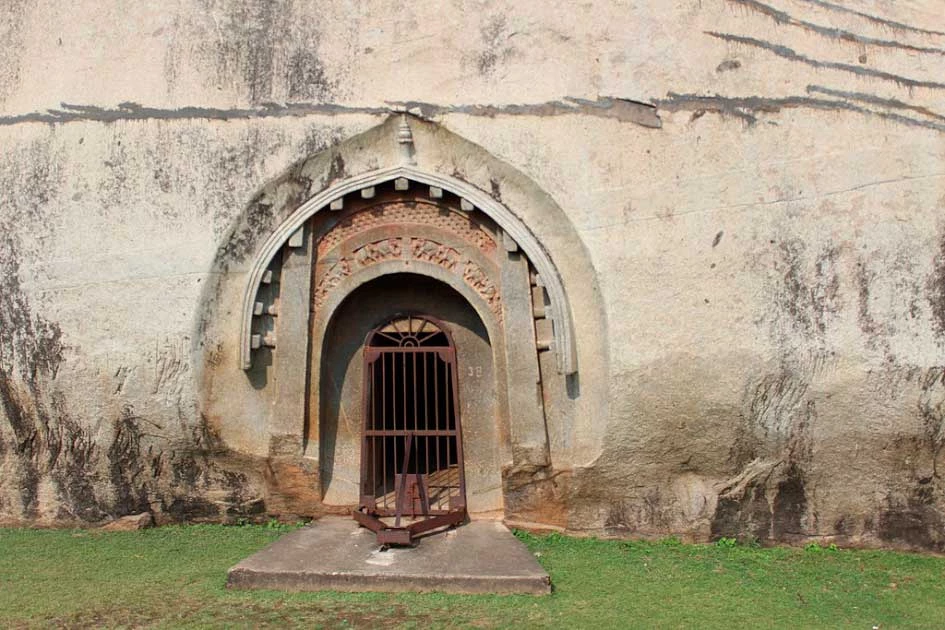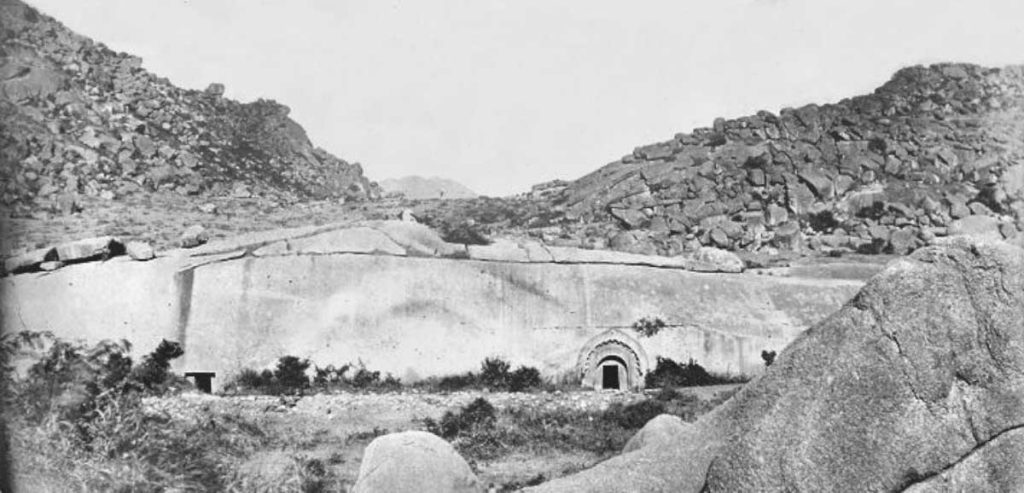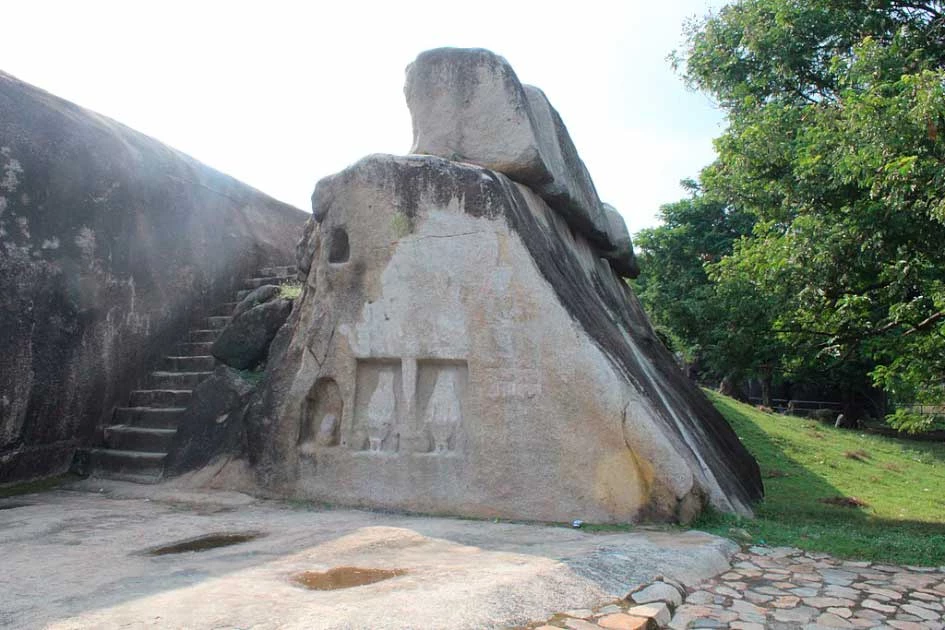The Barabar Hill Caves are some of the oldest surviving rock-cut caves found in India, around 40km (25 miles) from Bodh Gaya in the state of Bihar. Mainly there are four caves: Karan Chaupar, Lomas Rishi, Sudama, and Visvakarma.
They are carved from granite, and monolithic rock and are supposed to have been constructed by Emperor Ashoka. Additionally, there are three more caves in the Nagarjuni Hills. They have inscriptions that give the names of the kings they were built for (or under). The oldest is thought to date back to the 3rd century BC.
The caves themselves were used by ascetics from the Ajivika, an Indian philosophy dating from the 5th century. These are people who would abstain from sexual gratification in order to pursue spiritual goals.
The movement was founded by Makkhali Gosala, a contemporary of Buddha. Thus, it is no surprise that there are also Buddhist and Hindu sculptures from later periods.
Most of the caves are made up of two chambers carved from stone. The surfaces are well-polished as are the decorations that adorn the chambers. But the effort to construct them in this way would have been immense: why were they carved out of solid rock?
The Caves
The Barabar caves have greatly influenced the tradition of rock-cut architecture across the Indian subcontinent.

The Lomas Rishi cave has an aesthetic that looks very similar to contemporary timber architecture. Across the doorway, there is a row of elephants that precede stupa emblems. Stupas are mound-like structures used for meditation.
- Temple, Spire or Alien Landing Pad? The Mystery of Somapura Mahavihara
- India’s Haunted Village: Why was Kuldhara Abandoned?
This cave is probably the most famous of the set. It has a beautifully carved door and is located on the Southern side of the hill. It has two rooms. One is rectangular whilst the other is circular. The façade imitates wooden architecture probably found in contemporary villages.
Stone reproductions of wooden buildings and other plant materials are scattered around the room. There is no inscription within the cave to help date it. This is suspected to be because of rockslide issues in the area. Likely, this cave was carved at a similar time as the rest around 260 BC.
It shares a similar internal style and the finishing on the rocks is the same apart from in the vault where the digging seems to have been interrupted. There have been suggestions that this cave did not receive an inscription because it was incomplete.
However, recent research has suggested that this is not the case. Vivaskarma was never completed but was consecrated by the emperor. Instead, it may suggest that the cave is much later in the Mauryan Empire than the others.
Sudama cave was dedicated by a Mauryan Emperor named Ashoka in 261 BC. The Mauryan empire ruled a huge swathe of India in the Iron Age and lasted from around 322 to 185 BC. The arches of this cave are more of a bow shape and consist of a vaulted chamber with a circular shape and a pillared rectangular hall. It is also located on the Southern side of the granite hill.
The cave was likely the first one and is adorned with an inscription in Brahmi using the name Priyadarsin, meaning “He who brings joy”. One of the most interesting characteristics of this cave is the fact that the interior walls are perfectly flat and polished. It creates a mirror effect on the stone and allows the sound to bounce off the walls quite dramatically. The effect creates an amplified echo which may have been used to enhance the songs of monks or religious ceremonies.

Karan Chaupar is a small single rectangular room also with polished surfaces. It has an inscription within it that dates the cave to 245 BC. This cave is located on the Northern side. It is made up of just a singular rectangular room but does have an inscription located outside.
The inscription reads “in my 19th year of reign, I, King Priyadarsin, offered this cave of the very pleasant mountain of Khalatika, to serve as a shelter during the rainy season”. This cave features a rock-cut bench at one end which provided a place for meditation or sleeping.
Visvakarma is only reachable from the Ashoka steps which have been carved from the cliff on which it sits. It has two larger rectangular rooms. This cave is around one hundred meters east of the main granite hill.
The larger rectangular room is open to the outside while an enclosed sub-circular room is at the far side. There are also four small holes in the floor which may have allowed for a wooden fence to close the cave when necessary. Despite this cave remaining unfinished it still has a dedication from Ashoka which has helped to question the other dates of the caves particularly the Lomas Rishi Cave.
Dating the Caves
Helpfully, some of the caves share an inscription from Emperor Ashoka. The caves of Visvakarma and Sudama are dedicated to the Ajivkas in the twelfth year of his reign during his conversion to Buddhism.
It is then suspected that he built the other caves though this is much harder to prove. Karna Chaupar is recorded as being in the nineteenth year of his reign. This cave may have been dedicated to the Buddhists, but another translator also claims that this was dedicated to the Ajivikas.

Interestingly, despite the Lomas Rishi not having an inscription, its architecture reflects more of a Buddhist style. It is thought that this cave was a reference for a Chaitya arch which is a room similar to a temple or prayer hall most commonly associated with Buddhism.
One of the most interesting aspects of the caves is the polished walls of the extremely hard granite structures. Elsewhere in Maurya society, this skill is shown in sculptures and pillars.
However, this level of skill and technology is not seen anywhere else in this period on this scale. Some historians have argued that the precision and accuracy of these caves, surpass even the finest Greek buildings that exist throughout the ancient world.
Top Image: The Barabar caves were carved over two millennia ago, with exacting perfection. Source: Abhisal2408 / CC BY-SA 4.0.
By Kurt Readman